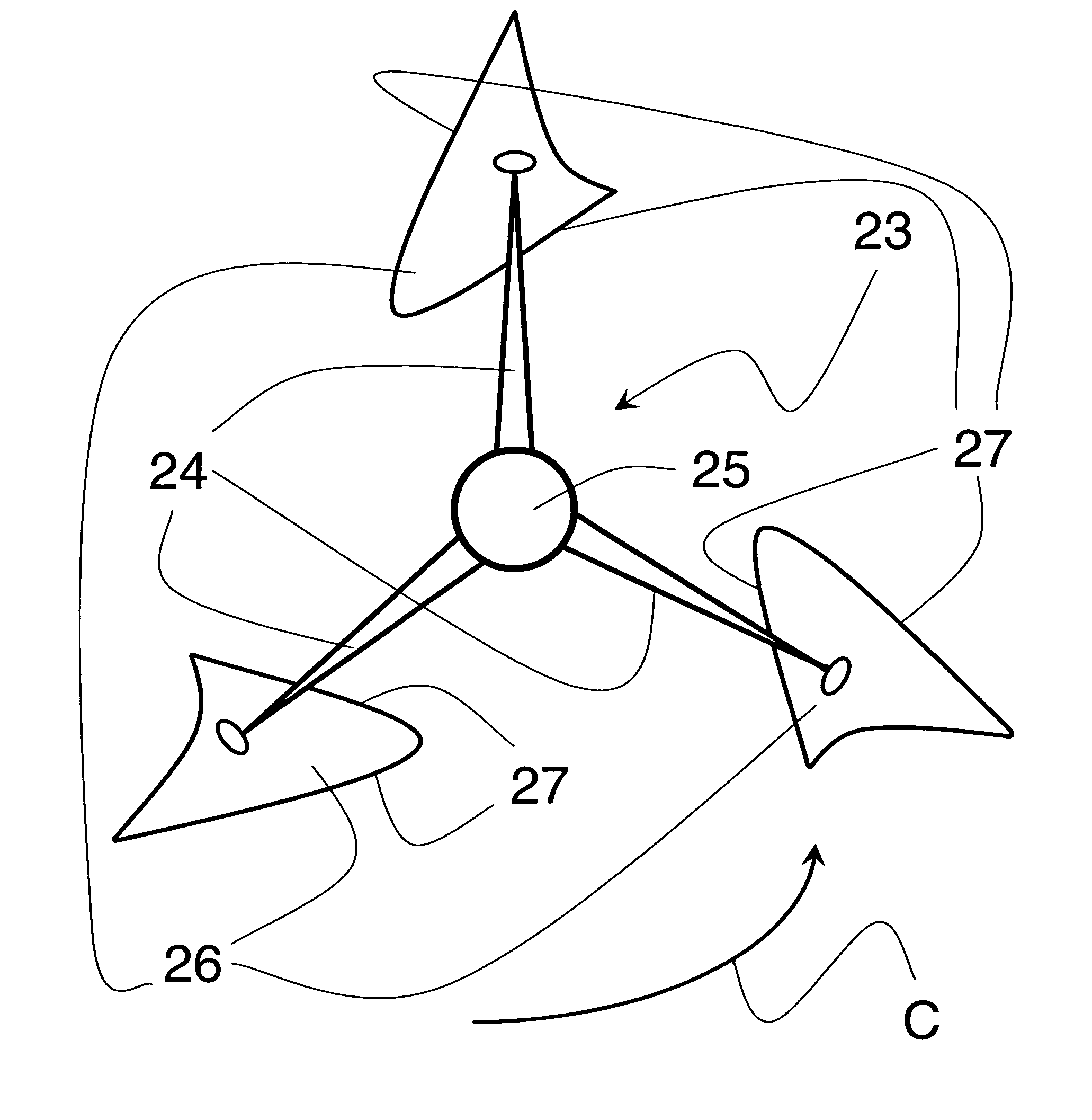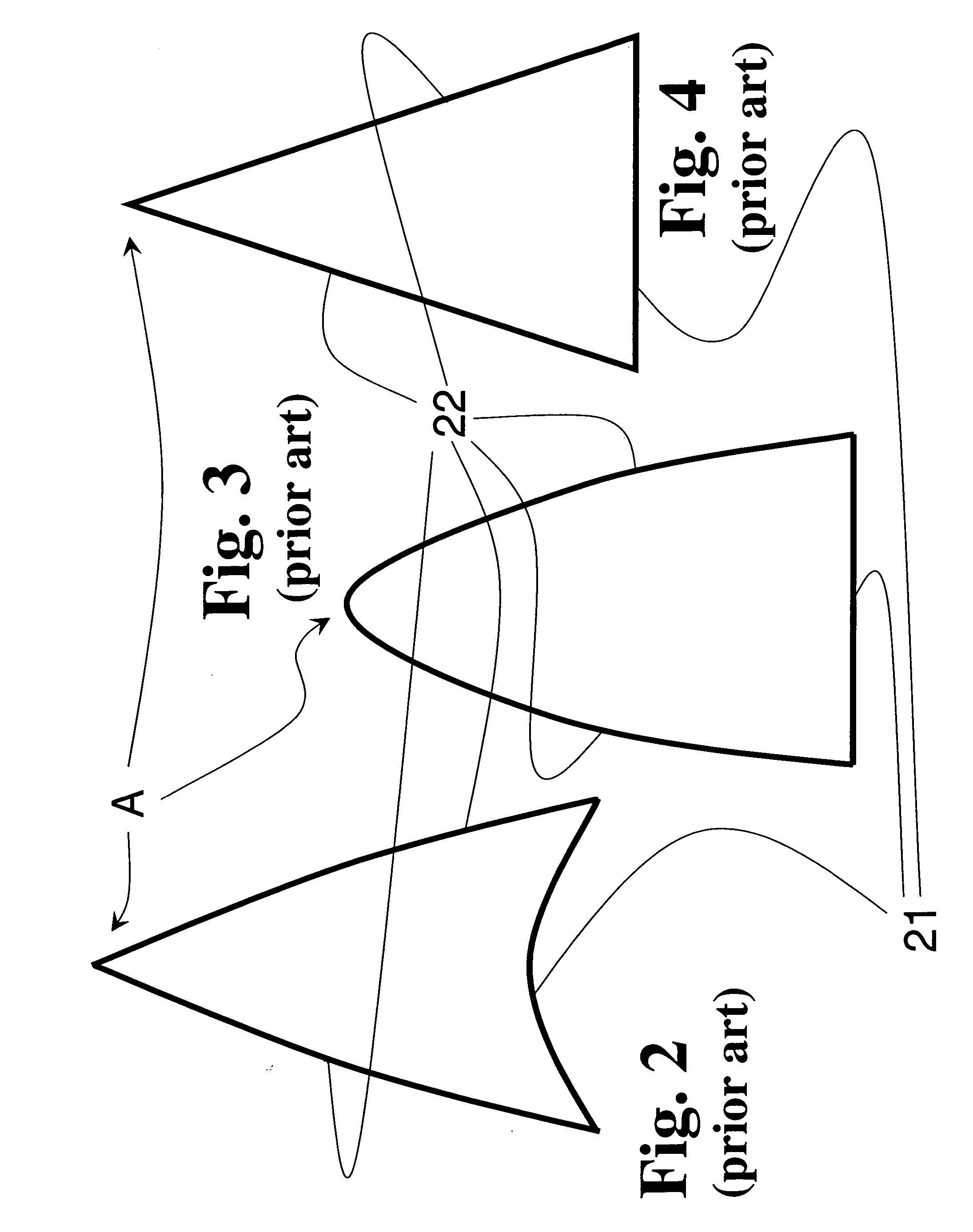Wind turbine rotor
a technology of wind turbines and rotors, which is applied in the direction of renewable energy generation, vessel construction, greenhouse gas reduction, etc., can solve the problems of airplane propellers, wind turbines that are much less effective, and have a three-bladed rotor type of wind turbines that can be costly to constru
- Summary
- Abstract
- Description
- Claims
- Application Information
AI Technical Summary
Benefits of technology
Problems solved by technology
Method used
Image
Examples
Embodiment Construction
[0025] The basic design of the Oceanic sprit rig and its unique sail is displayed in FIG. 1. A sail 20 of the Oceanic lateen has an arrowhead-like profile with a deeper camber—or curve to the sail—at or near a trailing edge 21. The camber gradually diminishes towards the tip, designated by arrow “A”, where it may disappear entirely. The sail 20 has leading edges 22 forming the other two sides of the arrowhead, and the leading edges 22 lie generally in the same plane. Also, the sail 20 is more or less symmetrical along its longitudinal axis.
[0026] When sailing upwind or on a beam reach, the tip is closer than the trailing edge 21 to the direction the wind is coming from. That is, the tip is in general nearer to the front of the boat than is the trailing edge 21. Also, like other types of sails, the concave side of the sail 20 always faces the wind. That is, the windward side of the sail 20 is concave and the leeward side is convex.
[0027] For a sailboat, the sail of crab claw rig is...
PUM
 Login to View More
Login to View More Abstract
Description
Claims
Application Information
 Login to View More
Login to View More - R&D
- Intellectual Property
- Life Sciences
- Materials
- Tech Scout
- Unparalleled Data Quality
- Higher Quality Content
- 60% Fewer Hallucinations
Browse by: Latest US Patents, China's latest patents, Technical Efficacy Thesaurus, Application Domain, Technology Topic, Popular Technical Reports.
© 2025 PatSnap. All rights reserved.Legal|Privacy policy|Modern Slavery Act Transparency Statement|Sitemap|About US| Contact US: help@patsnap.com



